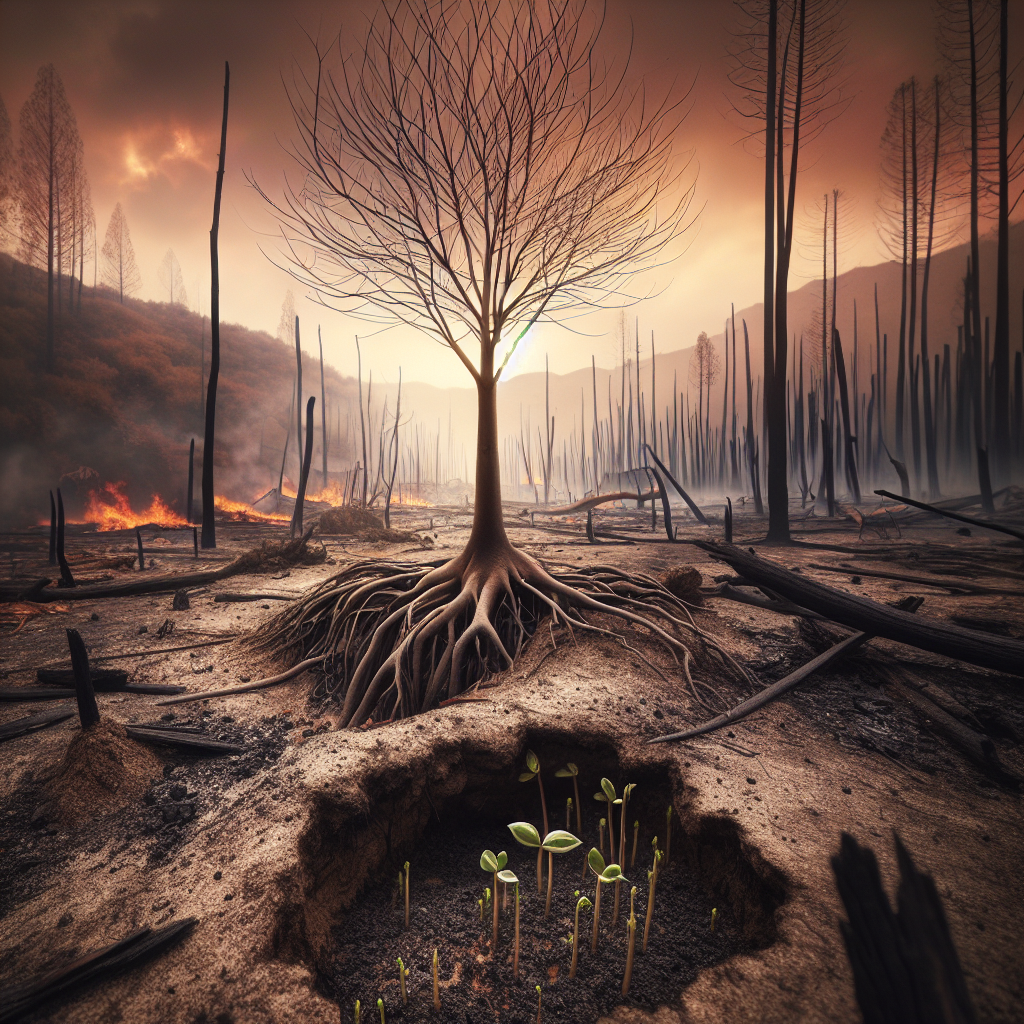Hey there! Are you ready to tackle the topic of wildfires emergency preparedness? We know that wildfires can be both unpredictable and devastating, but taking steps to prepare beforehand can make a world of difference. In this article, we’ll explore the importance of being prepared for wildfires and provide some handy tips on how to safeguard yourself, your loved ones, and your property. So, let’s dig in and make sure you’re well-equipped to handle any future wildfire emergencies.
Understanding Wildfires
Wildfires are intense and destructive fires that rapidly spread across vegetation, threatening homes, wildlife, and the environment. It is crucial to understand the causes, types, and behavior of wildfires to effectively mitigate and respond to these dangerous situations.
Causes of Wildfires
Wildfires can occur due to a range of factors, both natural and human-induced. Natural causes include lightning strikes and volcanic eruptions, while human causes encompass activities such as unattended campfires, discarded cigarettes, arson, and sparks from equipment or powerlines. Understanding the different causes helps us address the root of the problem and implement preventive measures.
Types of Wildfires
Wildfires can vary in size, intensity, and the area they affect. Understanding the different types of wildfires can assist in predicting their behavior and taking appropriate actions. Common types of wildfires include surface fires, which burn through vegetation on the forest floor; crown fires, which spread rapidly through the tops of trees; and ground fires, which smolder beneath the surface fuels. Each type requires specific approaches for containment and suppression.
Wildfire Behavior
Wildfires behave in complex ways, driven by a combination of weather conditions, fuel availability, and topography. Wind plays a significant role in how fast a wildfire spreads, as it carries embers and flames across terrain. Fire behavior can also be influenced by slope, with fires tending to burn faster uphill than downhill. Understanding wildfire behavior helps us anticipate its movements, plan evacuation routes, and allocate firefighting resources effectively.
Assessing the Risk
Assessing the risk of wildfires is crucial to determine the level of preparedness needed in high-risk areas. By identifying areas prone to wildfires, understanding fire danger ratings, and evaluating the vulnerability of properties, individuals and communities can better protect themselves and minimize potential damage.
Identifying High-Risk Areas
Certain geographic locations are more susceptible to wildfires due to factors such as dry climates, dense vegetation, and proximity to wilderness areas. By researching historical fire patterns, consulting local fire departments, and assessing factors such as fuel load and terrain, you can identify high-risk areas. This information is vital for effective emergency planning and evacuation strategies.
Understanding Fire Danger Ratings
Fire danger ratings provide critical information about the current risk of wildfires in specific regions. These ratings consider factors such as weather conditions, fuel moisture, and historical fire data. By staying informed about fire danger ratings, individuals can adjust their level of preparedness and take appropriate precautions to mitigate the risk.
Assessing Your Property’s Vulnerability
Assessing the vulnerability of your property is essential for implementing effective wildfire protection measures. Evaluate the proximity and types of vegetation surrounding your property, potential access points for flames or embers, and the fire resistance of your home’s construction materials. Identifying vulnerabilities allows you to prioritize necessary actions, such as clearing vegetation, improving structure resilience, and creating defensible space.

Creating a Wildfire Action Plan
Developing a comprehensive wildfire action plan is crucial to ensure the safety of yourself, your family, and your property during a wildfire event. This plan should include evacuation strategies, communication methods, and preparations of emergency supplies.
Developing an Evacuation Plan
An evacuation plan provides a clear course of action for safely leaving your property in the event of a wildfire. Identify primary and secondary evacuation routes from your neighborhood and establish a family meeting point away from the danger zone. Consider potential obstacles, such as road closures, and practice the evacuation plan to familiarize everyone with the process.
Establishing Communication Strategies
During a wildfire, effective communication is vital for disseminating evacuation orders, sharing information, and coordinating response efforts. Ensure everyone in your household understands how to receive emergency alerts and establish alternative communication methods in case primary channels are unavailable. Designate a family contact person who can relay messages and keep everyone informed.
Preparing Emergency Supplies
Assemble a well-stocked emergency supply kit that can sustain you and your family for at least three days. Items to include in your kit are non-perishable food, drinking water, medications, flashlights, batteries, a first aid kit, a battery-powered radio, important documents, and comfortable clothing. Regularly check and refresh your supplies to ensure their usability.
Maintaining Defensible Space
Creating and maintaining defensible space around your property is a critical aspect of wildfire preparedness. Defensible space reduces the likelihood of a fire reaching your home by creating a barrier that slows down or prevents its progress.
Clearing Vegetation and Debris
Regularly clear vegetation and debris from around your property, maintaining a minimum distance of 30 feet. Remove dead plants, dry leaves, and fallen branches as they can become fuel for wildfires. Prune tree branches within this space and keep grasses and shrubs well-maintained to minimize fire spread.
Principles of Defensible Space Design
Designing an effective defensible space involves following three essential principles: creating space between vegetation and your property, incorporating fire-resistant plants, and maintaining adequate spacing between plants. This design provides firefighters with a safer area to defend your property and reduces the chance of flames directly impacting your home.
Creating Fire-Resistant Landscaping
Choosing fire-resistant plants and materials for your landscaping can significantly reduce the risk of your property igniting during a wildfire. Opt for native plants that naturally resist fire or have high moisture content. Additionally, use non-flammable mulch and avoid planting highly flammable species near your home, especially within the 30-foot defensible space.

Protecting Your Home
Strengthening the resilience of your home against wildfires is essential for safeguarding your property and minimizing potential damage. Consider the following measures to enhance your home’s fire resistance.
Hardening Your Home Against Wildfires
Hardening your home involves implementing various modifications to make it more resistant to wildfires. These measures include replacing flammable roofing materials with fire-resistant alternatives, sealing gaps and vents, installing ember-resistant screens on windows, and using non-combustible siding. Such improvements can significantly reduce the risk of ignition.
Choosing Fire-Resistant Materials
When building or renovating your home, select fire-resistant materials to enhance its resilience against wildfires. Opt for materials such as brick, stone, and metal for exterior walls and roofs. Additionally, choose tempered glass for windows and install fire-resistant doors. These materials are less likely to ignite and can better withstand the heat and potential ember attacks during a wildfire.
Installing Ember-Resistant Features
Embers are one of the main causes of home ignitions during wildfires. Install ember-resistant features, such as mesh screens or guards, on gutters, vents, and openings to prevent embers from entering your home. Additionally, enclose or elevate areas beneath decks and porches to minimize potential fuel sources and prevent ignition.
Preparing Livestock and Pets
In emergency situations, it is essential to have plans in place to protect your animals and ensure their safety. Preparing ahead of time will help minimize stress and improve the chances of successfully evacuating your livestock and pets.
Creating an Evacuation Plan for Animals
Develop an evacuation plan specifically designed for your livestock and pets. Identify suitable temporary shelters or safe zones where you can relocate animals. Ensure these locations have sufficient food, water, and shelter. Practice loading livestock onto trailers, and familiarize pets with their carriers to reduce anxiety during evacuation.
Building Animal Shelters and Safe Zones
Construct animal shelters and safe zones on your property to provide a designated area of protection during a wildfire. Ensure these areas are far enough from the main house, have appropriate fencing, and offer adequate space for each type of animal. Regularly maintain the shelters and test any fencing to ensure its integrity.
Assembling Emergency Kits for Pets and Livestock
Prepare emergency kits for your pets and livestock that contain essential supplies to sustain them during and after a wildfire. These kits should include food, water, medications, blankets, leashes, identification tags, and any necessary documentation. Make sure to periodically review and update the kits to reflect the changing needs of your animals.

Developing Community Preparedness
Collaborating with neighbors and local authorities can significantly enhance wildfire preparedness at the community level. By working together, you can share resources, information, and support, fostering a more resilient and prepared community.
Organizing Neighborhood Fire Prevention Groups
Organize and actively participate in neighborhood fire prevention groups to coordinate wildfire mitigation efforts. These groups can conduct regular community clean-up events, share information about fire prevention practices, and establish communication channels during emergencies. Collaborating with neighbors creates a strong support system and promotes a collective approach to wildfire preparedness.
Collaborating with Local Authorities
Engage with local fire departments, emergency management agencies, and other relevant authorities to access valuable resources and guidance. Stay informed about community emergency plans, evacuation routes, and local ordinances related to wildfire prevention. By working closely with these authorities, you can strengthen your community’s preparedness and response capabilities.
Sharing Emergency Resources and Information
Establish a network within your community to share emergency resources and information. This can include creating a list of community members with specific skills or resources, such as individuals with medical training or those who own firefighting equipment. Share relevant contact information, emergency plans, and updates on fire danger ratings to ensure everyone stays informed and prepared.
Emergency Notifications and Alerts
Receiving timely and accurate information about wildfires and evacuation orders is crucial for effective response. Take advantage of emergency notification systems and understand how to respond in emergency situations.
Registering for Emergency Alerts
Register for emergency alert systems provided by local authorities, which deliver critical information about wildfires directly to your phone or email. Ensure your contact information is up to date and familiarize yourself with the specific procedures for your area. Staying informed through these alerts enables you to make timely decisions and take appropriate actions.
Understanding Alert Systems
Become familiar with the different types of emergency alerts and their meanings. These alerts may include evacuation orders, evacuation warnings, shelter-in-place directives, and all-clear messages. Understanding the nuances of each alert allows you to respond appropriately and ensure the safety of yourself and your loved ones.
Responding to Evacuation Orders
Responding promptly to evacuation orders is vital for your safety and the well-being of others. If an evacuation order is issued for your area, follow the specified routes and instructions without delay. Gather your emergency supplies, secure your property, and evacuate to the designated safe location. Do not jeopardize your safety by ignoring or delaying evacuation orders.

Emergency Escape Routes
Having multiple escape routes and a well-thought-out evacuation plan is crucial during a wildfire. Prepare yourself and your family by identifying escape routes, establishing a family evacuation plan, and designating meet-up locations.
Identifying Multiple Escape Routes
Identify multiple escape routes from your neighborhood that lead to safe areas. These routes should include primary, secondary, and even tertiary options, as conditions can quickly change during a wildfire. Consider alternative roads, trails, or highways that can be used if primary routes become inaccessible.
Developing a Family Evacuation Plan
Develop a detailed family evacuation plan that outlines roles, responsibilities, and actions to take during an evacuation. Assign tasks such as packing emergency supplies, securing the home, and ensuring everyone is accounted for. Practice the evacuation plan regularly to familiarize everyone with their roles and optimize response times.
Creating Meet-Up Locations
Establish designated meet-up locations both within your neighborhood and outside the immediate danger zone. Within the neighborhood, choose a location that is easily identifiable and easily accessible for all family members. Consider a secondary meet-up location outside the neighborhood, such as a community center or a friend’s house. These meeting points provide a way to ensure everyone is safe and accounted for after evacuation.
Post-Fire Recovery
After a wildfire, the recovery process involves assessing damage and hazards, navigating insurance claims, and rebuilding your property and community.
Assessing Damage and Hazards
Once it is safe to return to your property, assess the extent of damage caused by the wildfire. Take photographs and document any structural damage, loss of belongings, or hazardous conditions. Be cautious of potential hazards such as weakened trees, unstable slopes, or damaged utility lines, and report them to the appropriate authorities.
Navigating Insurance Claims
Initiate the process of filing insurance claims promptly to expedite the recovery. Contact your insurance company to report the damage and follow their instructions for providing documentation and evidence. Take inventory of your belongings and any repairs or rebuilding required. Keep detailed records of communication with your insurance company throughout the claims process.
Repairing and Rebuilding
Repairing and rebuilding your property is a significant aspect of post-fire recovery. Engage professionals, such as contractors and architects experienced in fire-resistant construction methods, to assess the damage and plan the reconstruction process. Follow local building codes and regulations, and consider implementing additional fire mitigation measures to enhance the future resilience of your property.
In conclusion, understanding wildfires, assessing the risks, creating a wildfire action plan, maintaining defensible space, protecting your home, preparing livestock and pets, developing community preparedness, staying informed through emergency notifications, identifying escape routes, and knowing the steps for post-fire recovery are all crucial elements of wildfire emergency preparedness. By being proactive and taking these measures, you can significantly reduce the risks posed by wildfires and ensure the safety and well-being of yourself, your loved ones, and your community.






